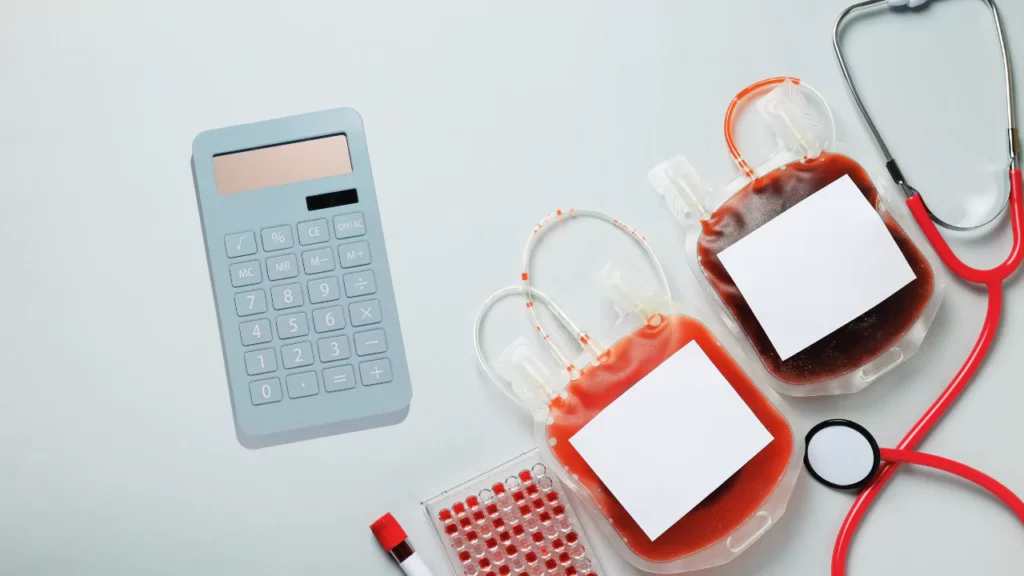Using this qPCR efficiency calculator find out the amplification efficiency of your qPCR reaction based on the slope of the standard curve.
qPCR Efficiency Calculator
Enter the slope of your standard curve into one of the two calculators below (depending on whether Ct is on the x- or y-axis of your graph).
For a graph where log (DNA copy)# is on the x-axis and Ct on the y-axis:
For a graph where Ct is on the x-axis and log (DNA copy)# on the y-axis:
Important notes
This tool calculates the amplification efficiency of a qPCR reaction based on the entered slope. Actual results may vary based on experimental conditions.
The qPCR Efficiency Calculator is an informative tool for scientists and researchers working with quantitative Polymerase Chain Reaction (qPCR) experiments. This calculator helps determine the amplification efficiency of a qPCR reaction based on the slope of the standard curve. Understanding and calculating qPCR efficiency is crucial for the accurate quantification of nucleic acids, which is a common requirement in various molecular biology and genetic research applications.
Principles
Quantitative PCR (qPCR) is a technique used to amplify and simultaneously quantify a targeted DNA molecule. The efficiency of a qPCR reaction is a measure of how well the amplification process is proceeding.
It indicates the doubling of DNA with each cycle of PCR. Ideally, a perfect qPCR efficiency is 100%, meaning the DNA quantity doubles with every cycle. However, due to various factors, the efficiency can vary, and understanding this efficiency is key to interpreting qPCR data accurately.
The key principle behind this calculation is the relationship between the slope of the standard curve and the amplification efficiency.
The standard curve is generated by plotting the logarithm of known concentrations of template DNA against the corresponding cycle threshold (Ct) values. The slope of this curve is then used to calculate the amplification efficiency using the following equations:
For a graph where log (DNA copy number) is on the x-axis and Ct on the y-axis:
Efficiency = (10^(-1/Slope) – 1) * 100
Amplification Factor = 10^(-1/Slope)
In this scenario, the slope of the linear regression line represents the change in Ct with each cycle for a 10-fold increase in DNA copy number. A steeper negative slope indicates a more efficient amplification, with fewer cycles needed to reach the threshold (lower Ct). The formula Efficiency = (10^(-1/Slope) – 1) * 100 accounts for this by taking the negative inverse of the slope and converting it to a percentage (multiplied by 100).
For a graph where Ct is on the x-axis and log (DNA copy number) on the y-axis:
Efficiency = (10^(-Slope/1) – 1) * 100
Amplification Factor = 10^(-Slope)
Here, the slope represents the change in log DNA copy number with each cycle.A positive slope indicates increasing DNA copy number with each cycle. The formula Efficiency = (10^(-Slope/1) – 1) * 100 adjusts for this by dividing the slope by -1 (effectively making it negative) before converting it to a percentage.
The amplification factor in both cases directly relates to the slope because it represents the fold change in DNA copy number per cycle during the exponential phase of the PCR reaction.
Uses
- Quantifying Nucleic Acids: This calculator is used to determine the efficiency of qPCR reactions, which is crucial for accurate nucleic acid quantification.
- Standardizing Experiments: Accurate efficiency calculations ensure that experiments are reproducible and consistent across different runs and different labs.
- Data Interpretation: Knowing the efficiency helps in interpreting qPCR data correctly, allowing for more reliable conclusions.
How to Use the Calculator
- Enter the Slope Value: Input the slope of your standard curve into the calculator.
- Calculate: Click the ‘Calculate’ button to determine the amplification factor and efficiency based on the entered slope.
- View Results: The calculator will display the amplification factor and efficiency for your qPCR reaction.
Example Calculation
Suppose you have a slope value of -3.32 for your standard curve where log (DNA copy number) is on the x-axis and Ct on the y-axis. You can calculate the amplification factor and efficiency as follows:
Input Slope Value: -3.32
Using the equation for amplification factor:
Amplification Factor = 10^(-1/-3.32) = 10^(0.301) = 2.00
Using the equation for efficiency:
Efficiency = (10^(-1/-3.32) – 1) * 100
Efficiency = (2.00 – 1) * 100 = 100%
Therefore, a slope value of -3.32 corresponds to an amplification factor of 2.00 and an efficiency of 100%.
Important Note
This calculator provides an estimation based on ideal conditions and does not account for potential variations due to experimental conditions, pipetting errors, or other factors. Always consider practical laboratory conditions and use this tool as a guideline rather than an absolute measure.
The slope value entered should generally be negative for valid qPCR efficiency calculations. A positive slope value is unusual and might indicate issues with the experiment. The calculator will provide accurate results with negative slope values as the slope generally gives negative values in standard qPCR curves.
Conclusion
The qPCR Efficiency Calculator is a straightforward and essential tool for accurately determining the efficiency of qPCR reactions. By understanding the principles and equations behind the calculations, researchers can ensure precise measurements that are critical for successful molecular biology experiments. Use this calculator to streamline your workflow, maintain consistency, and enhance the accuracy of your qPCR data interpretation.

Dr. Sumeet is a seasoned geneticist turned wellness educator and successful financial blogger. GenesWellness.com, leverages his rich academic background and passion for sharing knowledge online to demystify the role of genetics in wellness. His work is globally published and he is quoted on top health platforms like Medical News Today, Healthline, MDLinx, Verywell Mind, NCOA, and more. Using his unique mix of genetics expertise and digital fluency, Dr. Sumeet inspires readers toward healthier, more informed lifestyles.




